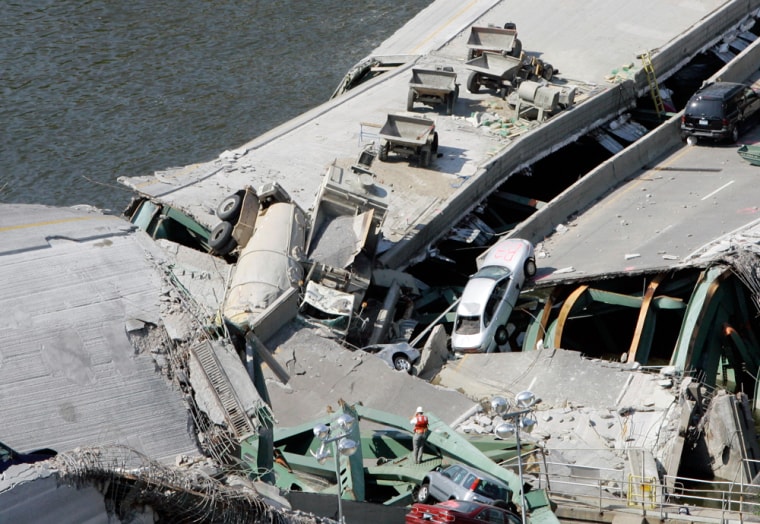Federal safety investigators on Thursday pinpointed steel plates in a main truss as the location where the deadly collapse of a Minneapolis bridge last year began.
The investigators also said more than a half million pounds of construction materials piled on top of the Interstate 35W bridge directly above the steel plates on the day they failed caused the bridge to collapse.
Investigators told the National Transportation Safety Board that workers had begun stacking material on the bridge in July. By Aug. 1, 2007, the stockpile had stretched onto the span that initially gave way.
During that evening's rush hour, the bridge shuddered and then tumbled into the Mississippi River, killing 13 and injuring 145.
Investigators say the thickness of the steel plates was the key problem, but they will offer a safety recommendation for the board to approve regarding storing of construction materials on bridges.
The bridge collapse was unavoidable, investigators said, once the U-10 steel gusset plates failed due to a serious design flaw. They also ruled out corrosion and pre-existing cracking as factors.
A two-day board hearing now under way quickly focused on the U-10 gusset plates of the Interstate-35W bridge.
The NTSB as far back as January had identified design flaws in the plates as a critical factor in the collapse.
The disaster was seen by many as a wake-up call for a nation that had neglected its infrastructure for too long.
Democrats in Minnesota heaped criticism on the state's Republican governor, Tim Pawlenty.
Democrats in Congress said the accident showed the nation's roads and bridges were crumbling.
During his campaign for the White House, President-elect Barack Obama cited the Minneapolis bridge collapse and called for spending more on the nation's crumbling highways, bridges and tunnels.
In July, the House passed legislation authorizing an additional $1 billion next year to rebuild structurally deficient bridges on the national highway system. The bill would also require states to come up with repair plans for troubled bridges.
The Senate has yet to act on the bill. If no action is taken during a lame-duck session that starts next week, lawmakers would have to start anew on the legislation in January.
